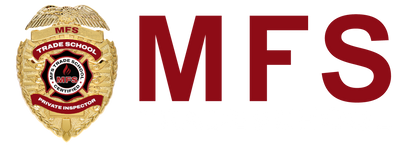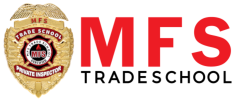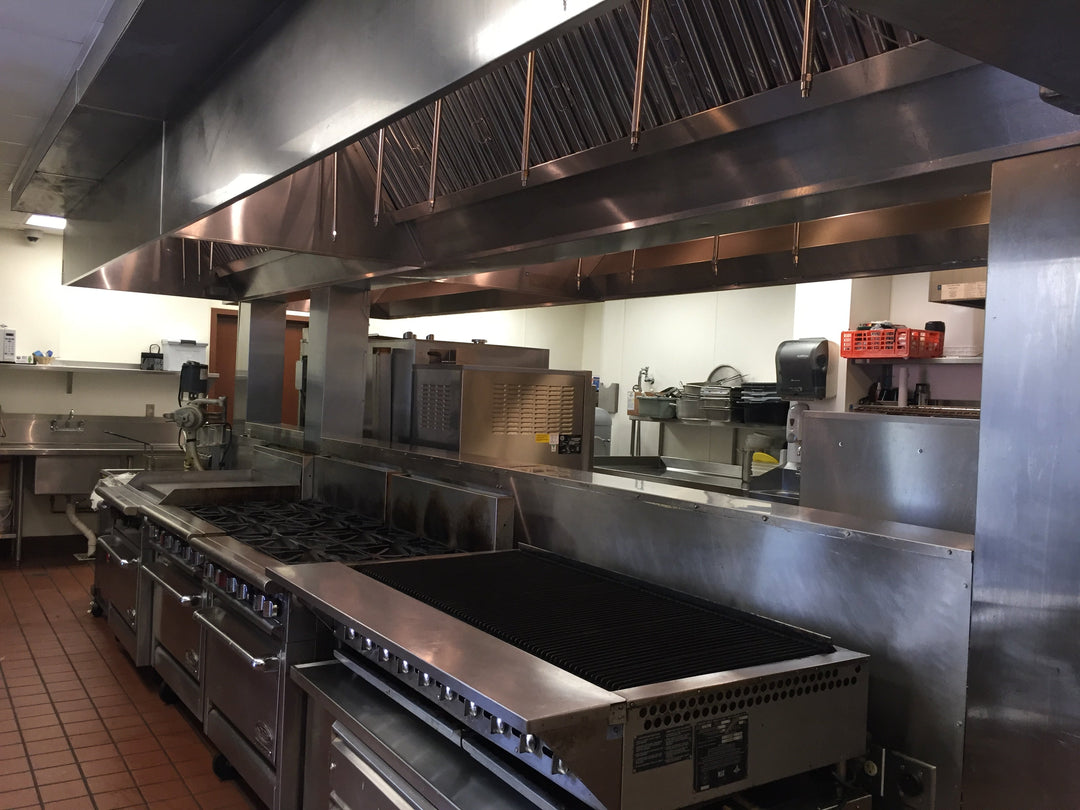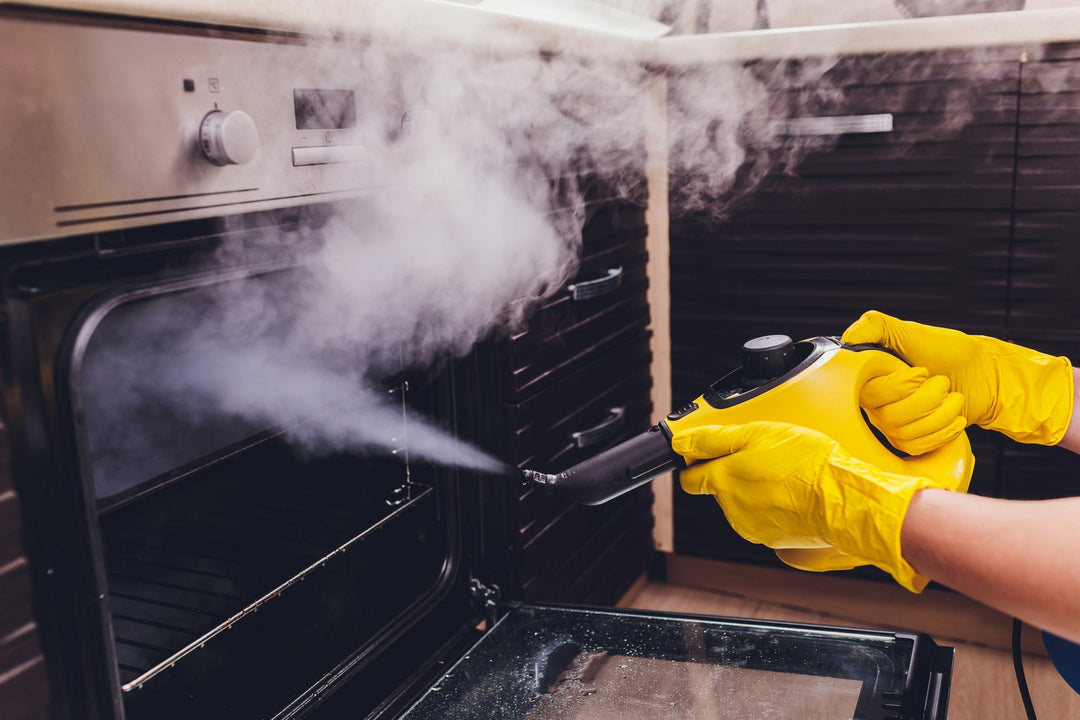Kitchen Exhaust Cleaning: A Growing Industry You Can Enter Today
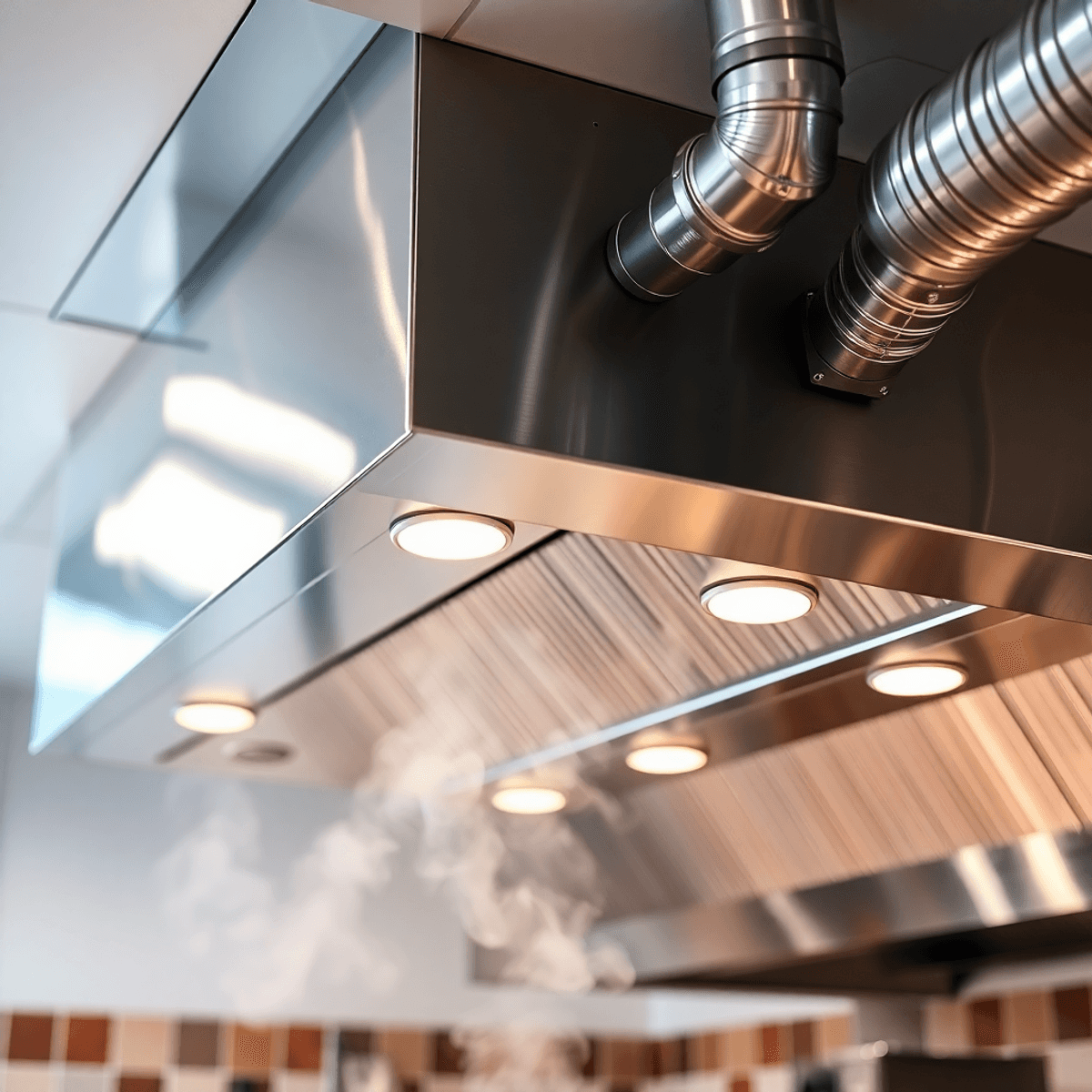
Kitchen exhaust cleaning is an essential service for commercial kitchens. It involves removing grease, oil, and other flammable substances from ventilation systems to ensure safe cooking environments. This specialized cleaning process targets exhaust hoods, ducts, fans, and filters - all crucial components of the kitchen's ventilation system.
The Importance of Professional Kitchen Exhaust Cleaning
Professional kitchen exhaust cleaning offers several benefits beyond regular maintenance:
-
Fire Prevention: Flammable grease buildup can pose severe fire risks. By removing this buildup through effective hood cleaning strategies, these fire hazards can be significantly reduced.
-
Air Quality Control: Proper ventilation is essential for maintaining good air quality in the kitchen. Kitchen exhaust cleaning ensures that the ventilation system functions optimally, providing fresh air for staff and customers.
-
Health Code Compliance: Food service establishments must adhere to strict health regulations. Regular kitchen exhaust cleaning helps meet these requirements and avoid penalties.
-
Equipment Longevity: Ventilation systems can be costly to replace. With regular maintenance through professional cleaning, the lifespan of these systems can be extended.
Factors Driving Growth in the Kitchen Exhaust Cleaning Industry
The kitchen exhaust cleaning industry has seen significant growth due to various factors:
-
Stricter safety regulations have been imposed on food service establishments
-
Increase in commercial kitchen operations such as restaurants, hotels, and catering businesses
-
Rising awareness among business owners about fire hazards associated with greasy kitchens
-
Growing demand for certified professionals who can provide specialized services
This expanding market presents significant opportunities for new entrants looking to start their own kitchen exhaust cleaning business.
Current Industry Projections
According to industry experts, the kitchen exhaust cleaning market is expected to continue growing steadily in the coming years. Several factors support this growth:
-
A rising number of restaurants and food service establishments are opening up
-
Enhanced focus on workplace safety by employers
-
Stringent health department requirements that mandate regular inspections and cleanings
-
Insurance company mandates proof of maintenance for coverage
These regulatory requirements, combined with safety concerns, create ideal conditions for professionals seeking entry into this specialized field.
How to Enter the Kitchen Exhaust Cleaning Industry
Entering the kitchen exhaust cleaning industry requires specific knowledge and skills:
-
Certification and Training: Obtaining proper certification from recognized organizations will enhance your credibility as a professional cleaner. Additionally, undergoing training programs will equip you with the practical skills needed for efficient operations.
-
Understanding Myths About Kitchen Hood Cleaning: There are several myths surrounding kitchen hood cleaning that could hinder effective operation if believed. It's important to debunk these myths through research or consultations with experienced professionals.
-
Accessing the Right Tools: Having access to high-quality tools such as powerful degreasers will make your cleaning process more efficient. Consider investing in specialized equipment designed specifically for this line of work.
Aspiring entrepreneurs can kickstart their journey by acquiring the necessary equipment through packages like the Silver Package Exhaust Hood Cleaning, which covers all essentials required for a successful start-up.
By understanding the intricacies of this industry and equipping themselves with the right resources, individuals can tap into its lucrative potential while providing vital services to food service establishments.
Market Drivers Behind Kitchen Exhaust Cleaning Growth
The kitchen exhaust cleaning industry is experiencing significant growth due to various market forces influencing the foodservice industry. Recent statistics show a 15% annual increase in demand for professional hood cleaning services in major cities.
1. Fire Safety Awareness
-
Restaurant fires cause $165 million in direct property damage each year.
-
Inadequate maintenance of exhaust systems is responsible for 43% of commercial kitchen fires.
-
Insurance companies require regular cleaning schedules.
-
Fire marshals conduct thorough inspections more frequently.
2. Regulatory Environment
-
NFPA 96 standards mandate cleaning every three months to annually, depending on cooking volume.
-
Health departments are enforcing stricter ventilation maintenance protocols.
-
Local authorities are conducting routine audits to ensure compliance.
-
Non-compliance can result in significant fines and even the closure of businesses.
3. Commercial Kitchen Expansion
-
Ghost kitchens are growing at a rate of 25% per year.
-
Food delivery services are creating new opportunities for cleaning services.
-
Cloud kitchen facilities have specific maintenance needs.
-
Restaurant chains are opening locations across the country.
4. Health and Safety Standards
-
Regulations on indoor air quality are becoming stricter in various states.
-
Measures to protect employee health are being intensified.
-
Customers are becoming more aware of kitchen cleanliness.
-
Environmental protection agencies are monitoring emissions from kitchens.
Given the increased focus on health safety, advanced virus disinfection techniques have become essential in commercial kitchens. This not only protects customers but also ensures compliance with health standards.
Industry Growth Indicators
-
12% rise in certified kitchen exhaust cleaning professionals
-
30% increase in specialized cleaning equipment sales, underscoring the importance of regular equipment maintenance for efficiency and cost savings
-
Growing demand for 24/7 emergency cleaning services
-
Market value projected to reach $838 million by 2025
The combination of these factors creates unique opportunities for entrepreneurs entering the kitchen exhaust cleaning market. Restaurant owners actively seek certified professionals who can maintain compliance while ensuring efficient operations. For those looking to enter this lucrative market, our Gold Package Kitchen Exhaust Hood Cleaning offers all the major equipment needed to start your business.
Technological Advancements Transforming the Industry
The kitchen exhaust cleaning industry has undergone significant technological evolution, introducing innovations that revolutionize service delivery and operational efficiency.
Advanced Cleaning Equipment
-
Specialized rotating brush systems with variable speed controls
-
Vacuum-assisted cleaning tools with HEPA filtration
-
Industrial-grade degreasers with eco-friendly formulations
Robotic and Automated Solutions
-
Remote-controlled duct cleaning robots navigating complex ventilation systems
-
Automated scheduling systems track cleaning cycles
-
Smart sensors monitor grease accumulation levels
Electrostatic Cleaning Technology
-
Particle charging systems capture microscopic contaminants
-
Dual-phase filtration removes particles as small as 0.3 microns
-
Real-time air quality monitoring during cleaning processes
Digital Compliance Tools
-
Cloud-based documentation systems
-
Photo and video inspection records
-
Digital reporting platforms for NFPA 96 compliance
-
Mobile apps for immediate certification generation
These technological innovations create measurable improvements in service quality:
-
40% reduction in cleaning time
-
60% increase in grease removal efficiency
-
85% improvement in air quality post-cleaning
-
90% decrease in manual labor requirements
The integration of smart technology extends beyond cleaning equipment. Real-time monitoring systems now track grease accumulation patterns, predicting optimal cleaning schedules. These data-driven insights enable proactive maintenance approaches, reducing fire risks and ensuring consistent compliance with health regulations.
Modern kitchen exhaust cleaning businesses leverage these advancements to deliver superior results while maintaining competitive pricing structures. The combination of robotics, AI diagnostics, and specialized cleaning tools creates new standards for service quality in the foodservice ventilation maintenance sector.
Business Opportunities in Kitchen Exhaust Cleaning
The kitchen exhaust cleaning industry presents substantial business opportunities with growing demand and multiple revenue streams. A strategic approach to entering this market can lead to a profitable and sustainable business venture.
Market Entry Requirements
1. Initial Investment: $10,000-$30,000
-
Professional-grade cleaning equipment
-
Transportation vehicle
-
Insurance coverage
-
Marketing materials
-
Initial certifications, such as those offered in comprehensive training programs for Kitchen Exhaust Hood Cleaning
2. Legal Requirements
-
Business registration
-
Liability insurance
-
Workers' compensation
-
Local permits
-
Health department certifications
Revenue Potential
1. Primary Services
-
Regular maintenance contracts
-
Emergency cleaning services
-
Post-inspection remediation
-
System inspection reports
2. Additional Revenue Streams
-
Filter replacement services
-
Ventilation system repairs
-
Fire prevention consulting
-
Equipment maintenance
Target Markets
1. Commercial Kitchens
-
Restaurants
-
Hotels
-
Cafeterias
-
Food courts
-
Catering facilities
2. Institutional Facilities
-
Schools
-
Hospitals
-
Military bases
-
Corporate campuses
-
Correctional facilities
Competitive Advantages
1. Specialized Equipment Access
-
High-pressure washing systems
-
Advanced inspection tools
-
Safety equipment
-
Professional cleaning solutions
2. Technical Expertise
Knowledge of NFPA 96 standards, health code compliance, fire safety regulations, and equipment maintenance protocols is crucial. Regular kitchen exhaust cleaning can significantly improve health ratings and ensure compliance with health department standards.
Business Growth Strategies
1. Service Expansion
Geographic territory growth, service line additions, equipment upgrades, and team expansion are key strategies.
2. Client Retention
Maintenance contracts, quality guarantees, emergency response services, and documentation systems play a vital role in retaining clients.
Moreover, mentorship can be an invaluable asset in accelerating your cleaning business growth. As discussed in our article about the impact of mentorship on cleaning business success, learning from seasoned industry experts can help aspiring entrepreneurs navigate challenges effectively.
The kitchen exhaust cleaning industry offers significant potential for entrepreneurs who prioritize professional standards and regulatory compliance. Success in this field requires a combination of technical expertise, business acumen, and commitment to safety standards.
Marketing Strategies Targeting Restaurants, Hotels, and Institutional Kitchens
Effective marketing strategies drive success in the kitchen exhaust cleaning industry. A multi-channel approach targets decision-makers in restaurants, hotels, and institutional kitchens:
Digital Marketing Tactics
-
Professional website showcasing before/after cleaning photos
-
SEO optimization for local search visibility
-
Social media presence highlighting safety compliance
-
Email campaigns educating about fire prevention
Direct Outreach Methods
-
Cold calling restaurant managers during off-peak hours
-
Door-to-door visits with professional presentation materials
-
Partnership building with local restaurant associations
-
Networking in the hospitality industry trade shows
Value-Based Messaging Points
-
Fire hazard reduction through regular maintenance
-
Cost savings on energy bills and equipment longevity
-
Compliance with health department regulations
-
Enhanced indoor air quality for staff and customers
Service Differentiation
-
24/7 emergency cleaning availability
-
Custom maintenance schedules
-
Digital inspection reports
-
Guaranteed compliance certification
Local Market Positioning
-
Competitive pricing structures
-
Flexible service packages
-
Seasonal promotions
-
Referral reward programs
Building trust through educational content positions your business as an authority in kitchen safety and maintenance. Demonstrating expertise in fire prevention and health compliance creates strong relationships with facility managers and business owners.
Career Paths And Professional Growth In The Industry
The kitchen exhaust cleaning industry offers diverse career opportunities with multiple advancement paths. Entry-level positions start as hood cleaning technicians, learning essential cleaning techniques and safety protocols. Through hands-on experience and specialized training, such as those provided by trade schools like MFS, technicians can progress to:
Technical Career Track:
-
Senior Technician
-
Team Leader
-
Operations Manager
-
Technical Director
-
Safety Compliance Officer
Business Development Path:
-
Account Manager
-
Sales Representative
-
Business Development Director
-
Independent Contractor
-
Company Owner
The industry rewards specialization in specific areas:
-
High-rise building ventilation systems
-
Industrial kitchen installations
-
Healthcare facility exhaust systems
-
Restaurant chain maintenance programs
Salary progression reflects experience and certification levels, with certified professionals commanding premium rates. Business owners can scale operations by:
-
Building recurring service contracts
-
Expanding service territories
-
Adding complementary services
-
Developing specialized cleaning techniques
-
Creating training programs
Industry organizations provide continuous learning opportunities through:
-
Technical workshops
-
Safety certification programs
-
Business management courses
-
Industry conferences
-
Networking events
The growing focus on food safety and fire prevention creates steady demand for qualified professionals, ensuring long-term career stability and growth potential in kitchen exhaust cleaning services. For those interested in pursuing a career in this field, MFS Trade School offers comprehensive training and certification programs tailored for the restaurant cleaning and maintenance industry.
Regulatory Compliance And Its Impact On Demand For Kitchen Exhaust Cleaning Services
The NFPA 96 standard is the foundation of kitchen exhaust cleaning regulations. It sets strict rules for:
-
Inspection frequencies based on cooking volume
-
Cleaning methods and documentation requirements
-
System design specifications
-
Grease accumulation limits
-
Safety protocols during cleaning operations
These regulations create a consistent demand for professional exhaust cleaning services. Commercial kitchens must maintain specific cleanliness levels, which include proper cooking oil filtration to ensure that grease buildup is minimized:
"The entire exhaust system shall be inspected for grease buildup by a properly trained, qualified, and certified person(s) acceptable to the authority having jurisdiction" - NFPA 96 Standard
Local health departments enforce additional requirements through:
-
Regular health inspections
-
Mandatory cleaning documentation
-
Certification verification
-
Risk assessment protocols
The regulatory landscape drives market growth through:
Mandatory Compliance
-
Fixed cleaning schedules
-
Documentation requirements
-
Professional certification needs
Risk Management
-
Insurance requirements
-
Liability protection
-
Fire prevention protocols
Health Safety Standards
-
Air quality regulations
-
Food safety guidelines
-
Employee protection measures
These regulations create significant business opportunities for certified exhaust cleaning professionals. Restaurants, hotels, and institutional kitchens require regular services to maintain compliance and protect their operations. The increasing complexity of regulations drives demand for specialized knowledge and professional cleaning services.
FAQs (Frequently Asked Questions)
What is kitchen exhaust cleaning, and why is it important in commercial kitchens?
Kitchen exhaust cleaning involves the thorough cleaning of exhaust hoods, ducts, and ventilation systems in commercial kitchens to prevent grease buildup. This process is crucial for reducing fire hazards, maintaining hygiene standards, and ensuring compliance with health and safety regulations.
What factors are driving the growth of the kitchen exhaust cleaning industry?
The industry is growing rapidly due to increased fire safety regulations like NFPA 96 compliance, heightened awareness of fire risks from grease buildup, expansion of commercial kitchens and food delivery services, and a rising focus on indoor air quality and health standards in foodservice establishments.
How are technological advancements transforming kitchen exhaust cleaning services?
Modern equipment, such as high-pressure steam cleaners, robotic cleaning tools, AI diagnostics, and electrostatic dust removal systems, is enhancing cleaning efficiency and effectiveness. These technologies reduce labor costs, improve safety, ensure regulatory compliance through real-time monitoring of grease levels, and provide faster service turnaround times.
What business opportunities exist within the kitchen exhaust cleaning market?
There are numerous opportunities including starting a kitchen exhaust cleaning business, providing hood cleaning services for restaurants and commercial kitchens, specializing in grease duct cleaning, offering foodservice health compliance services, and launching companies focused on kitchen ventilation maintenance. The demand for certified professionals makes this a profitable sector to enter.
What certifications and training are necessary to launch a successful kitchen exhaust cleaning business?
Professionals should obtain kitchen exhaust cleaner certification to ensure quality service delivery. Building expertise in NFPA 96 compliance and understanding foodservice health safety standards relevant to target markets is an essential step to gain client trust and meet regulatory requirements.
What marketing strategies are effective for targeting restaurants, hotels, and institutional kitchens in the kitchen exhaust cleaning industry?
Effective strategies include highlighting compliance with fire safety regulations, emphasizing certifications like certified hood cleaner credentials, showcasing expertise in NFPA 96 standards, promoting sustainable and efficient cleaning technologies, offering tailored maintenance packages for different foodservice operations, and building relationships through consistent quality service delivery.
